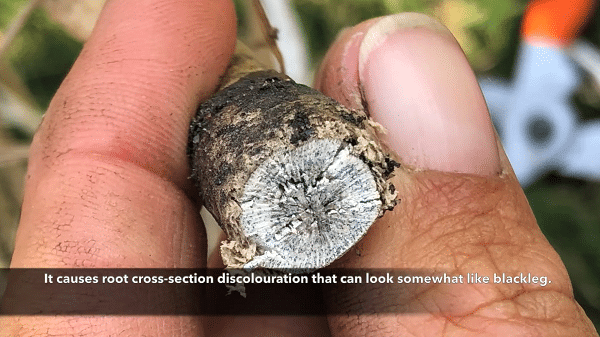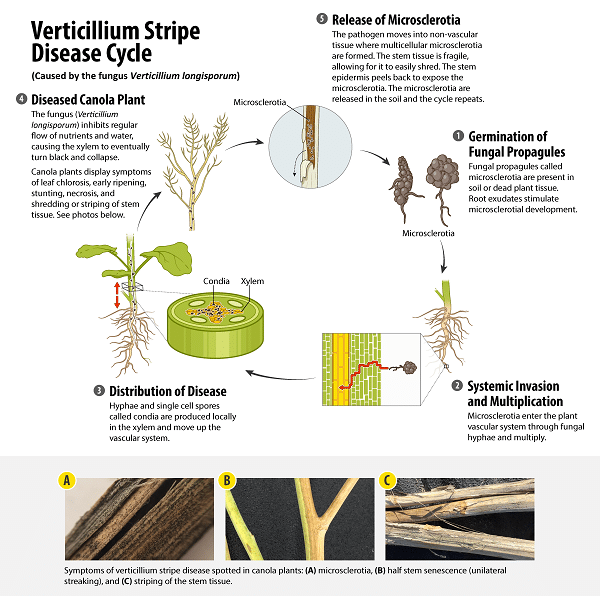
Know the facts before spraying for late-season insects
Depending on location, late-season insect pests such as lygus bugs and grasshoppers may be causing concerns for producers already experiencing a hot, dry growing season. The question most farmers have is whether it’s worthwhile to spray. For lygus bugs, this updated article features tips on lygus scouting and thresholds. This article offers advice for managing late-season flea beetles, which generally don’t impact canola yield this late in the season. Interested in learning more about grasshoppers in canola? Check out this story. One of the most important things you need to know before spraying is whether doing so at this stage will affect the marketability of your canola. This depends greatly on the pre-harvest interval (PHI) of the pesticide you’re using; in some cases it may be too late to spray. The Spray to Swath Interval Calculator can help producers determine the PHIs of various pesticides on canola.

Swath or straight-cut: a common question that comes up every year
Do you swath or straight-combine canola when the stand is uneven? When the crop is lodged? When you want to combine sooner? Advice on all these scenarios and more is available here. Straight-cutting thin stands comes with both upsides and risks. Some tips are available here. If you’re straight-cutting, desiccation timing and tools are crucial knowledge to have pre-harvest — see this article. And with such hot, dry conditions throughout most of the Prairies, desiccation may not be necessary. See this story for more information. Again, check the Spray to Swath Interval Calculator before using any product – including desiccant — on canola. This is a must with harvest rapidly approaching.

Late season essential time for disease scouting
Diseases are usually easiest to see and diagnose in the couple of weeks around swath timing. This article is a near-comprehensive guide to pre-harvest scouting for a large number of diseases including blackleg, clubroot and sclerotinia. Verticillium stripe is a new disease to keep an eye out for which thrives in dry conditions. It is starting to show up as prematurely ripened patches across fields in Manitoba. Premature ripening can be caused by a number of factors, so it’s best to check plants and fully assess from pod to root. Scouting tips for the disease can be found in the preceding link and the above video. As well, the CCC Canola Disease Scouting Guide can be brought along to the field and the Pre-Swath Disease Scouting video can be used as a reminder and visual reference for all major canola diseases.
Tools you can use
Canola Council of Canada features a range of tools that can help you get the most from this year’s canola harvest or adjust future management decisions. Learn more:
– Harvest loss calculator. Calculate combine seed losses in weight, volume or seed count so you can adjust your settings appropriately to increase profitability.
– Combine optimization tool. Optimize your combine settings to improve canola harvest and reduce losses.
– Blackleg yield loss calculator. Calculate your potential blackleg yield loss based on severity, incidence and projected yield of your canola.
– Spray to Swath Interval Calculator. Find out how many days you need to leave between pesticide application and cutting.
